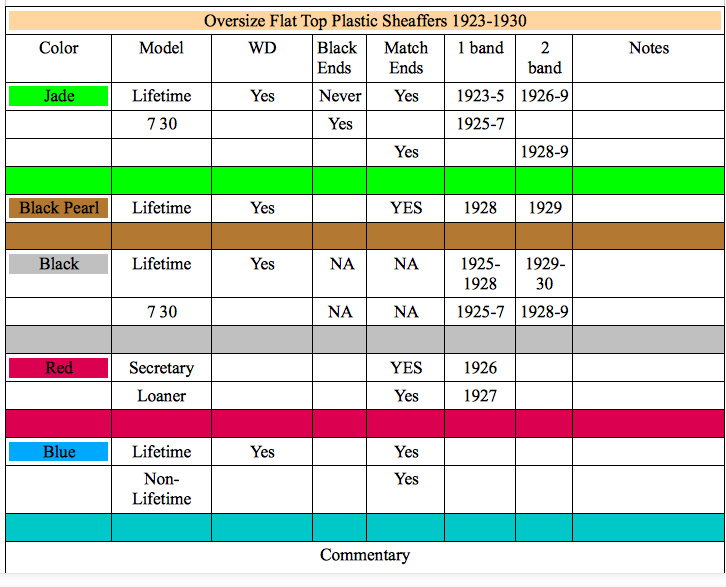David and Rick;
It looks easier in my head (aided with an excel spreadsheet). Rick, thanks for guessing a number - as many as all that? No.
It's not too complicated as there are primarily two lengths, four diameters and four colors. There are a very few exceptions, pygmys and the J74TR (long quill or "dialer"). There are decisions to be made as the initial release of radite was merely a change in pen material for models already being made - 22 Student Special, 46 Special and Secretary with lifetimes spanning everything. Then all the small pens were dropped for the 3-25, 5-30 and 7-30's. 22's become 3-25's but, so do 46's though not all so some 46's are 5-30's depending initially on color which gets adjusted in 1930 bringing the reduction of girth for the 3-25's in coral. Sheaffer didn't have a rule book.
There are 45 non lifetime radite pens not counting the coral sizes as different models nor some trim varieties as different models but counting double ringed 5-30's as a different model. So over 50 if we throw in more coral models.
Lifetimes are offered in three girths, two lengths and three colors. Trim variations also matter and have separate codes. There are only three black and pearl pens cataloged and those are the standard array of clip, short clip, ringtop all lifetime. There are also K85's and K89's (OS with wider gold bands) though they are very rare. Also, counting the double rings as a separate model.
There are 39 different lifetime models.
So in the six years that radite flattop ruled (1924-1929) there are at least 84 different models. After 1930 the number of variations would be higher as there are added trim variations with flatball clips, thin coral 3-25's and late black and pearl models.
Roger W.















